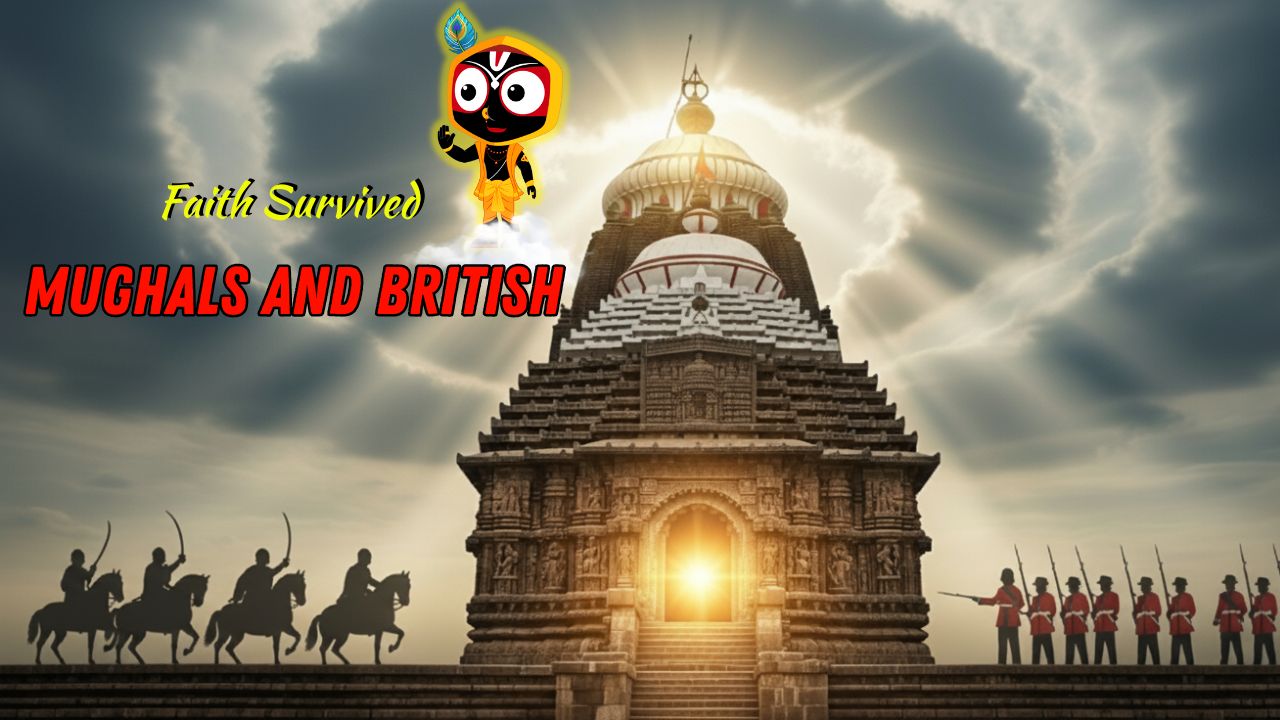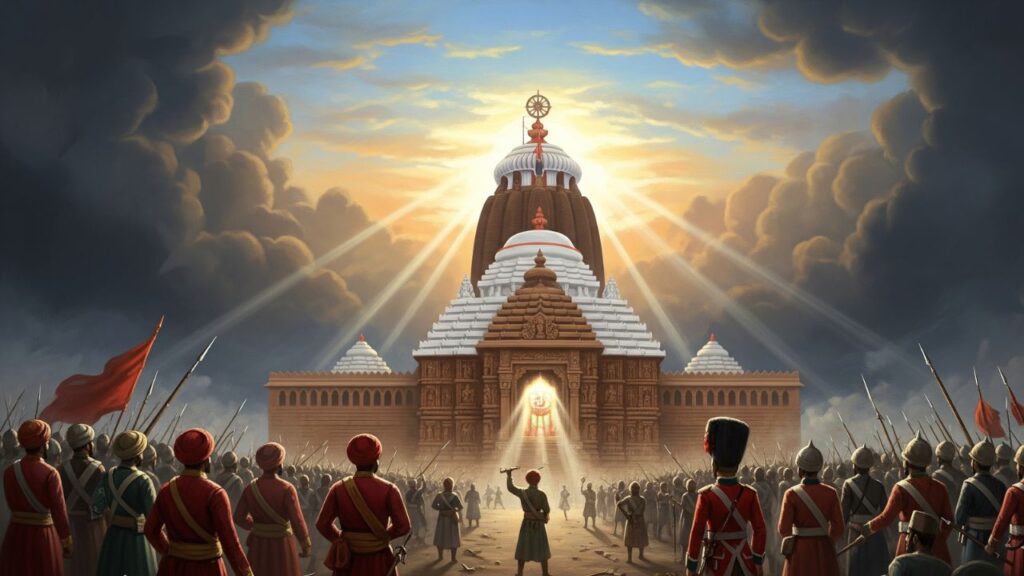
Attacks on Jagannath Temple: How Faith Survived Mughals and British
Introduction
Attacks on Jagannath Temple. The Jagannath Temple in Puri, Odisha, is one of the holiest shrines in India, attracting millions of devotees every year. Built in the 12th century by King Anantavarman Chodaganga Deva of the Ganga dynasty, it is not just a religious symbol but also a cultural landmark.
Over centuries, this sacred temple has faced numerous attacks, invasions, and political interference, especially during the Mughal era and British colonial rule. Yet, despite these challenges, the faith of the devotees and the resilience of the local community ensured that the temple traditions continued unbroken.
The Mughal Era and Jagannath Temple
Aurangzeb’s Orders
-
In the late 17th century, Mughal Emperor Aurangzeb issued orders to curb Hindu practices.
-
The Jagannath Temple, being a major spiritual hub, came under his attention.
-
Historical sources mention that attempts were made to stop rituals and even seize temple wealth.
Safeguarding the Deities
-
To protect Lord Jagannath, Balabhadra, and Subhadra, the temple priests and devotees secretly shifted the idols during times of danger.
-
The deities were often taken to safe locations like remote villages or forests until the threat passed.
-
This practice of idol protection (Darubrahma shifting) became a symbol of community devotion.
Community Resistance
-
Local kings and common people united to safeguard the temple.
-
Pilgrims continued to visit despite risks, showing that faith was stronger than fear.
British Colonial Interference
Control Over Temple Administration
-
After the British East India Company gained control in Odisha (1803), they interfered in temple management.
-
Initially, the Company directly managed the temple’s income and pilgrim tax, treating it as a revenue source.
-
Later, due to criticism and religious sensitivity, administration was handed back to local authorities.
Restrictions on Festivals
-
The British feared that large gatherings like Ratha Yatra could turn into political uprisings.
-
Regulations were placed on processions, pilgrim entry, and temple rituals.
-
Despite these restrictions, the festivals never stopped—devotees adjusted but never abandoned their traditions.
The Paika Rebellion (1817)
-
The temple and its surroundings became a center of resistance during the Paika rebellion against the British.
-
The British viewed the temple as a potential rallying point for revolts, which made them suspicious of its influence.

Faith and Survival: How the Temple Endured
Role of Gajapati Kings
-
The Gajapati rulers of Puri, traditional custodians of Lord Jagannath, continued their patronage even under Mughal and British pressure.
-
They financed rituals, protected the priests, and stood as defenders of the Jagannath tradition.
Priests and Devotees
-
Priests adapted rituals to changing circumstances, ensuring that daily worship never stopped.
-
Ordinary devotees contributed through offerings, voluntary service, and safeguarding temple assets during crises.
Festivals as Resistance
-
The Ratha Yatra became more than a festival—it was a statement of survival.
-
Neither Mughal bans nor British restrictions could suppress the spirit of millions who came to witness the divine chariots.
Legacy of Resilience
-
The Jagannath Temple today stands as a symbol of endurance, having survived centuries of political upheavals.
-
Despite Aurangzeb’s attempts to silence rituals and British efforts to control traditions, the temple remained a living center of faith.
-
Its story reflects not just religious devotion, but also the cultural and social unity of Odisha.
Conclusion
The history of the Jagannath Temple is a powerful reminder that faith can outlast empires.
-
The Mughals tried to suppress it, but devotees protected the deities.
-
The British tried to control it, but traditions adapted and survived.
Today, the temple continues to inspire millions, proving that the strength of spirituality and community can withstand even the strongest storms of history.


Leave a reply here
Your email address will not be published. Required fields are marked *